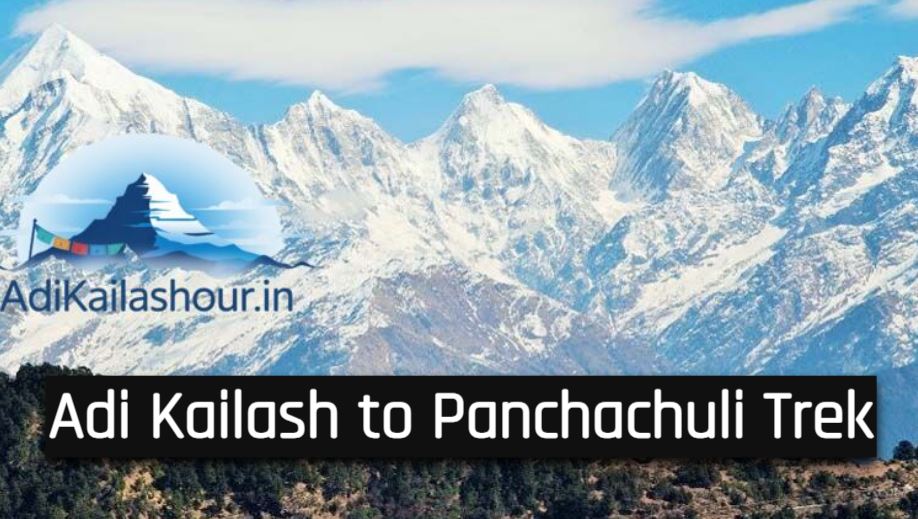The trek from Adi Kailash to Panchachuli offers an adventurous and spiritually enriching journey through some of the most pristine regions of the Kumaon Himalayas in Uttarakhand, India. Both Adi Kailash and Panchachuli are sacred mountain destinations revered by devotees and trekkers alike. This guide provides a detailed look into the route, trekking distances, elevations, and travel tips for completing the journey between these two iconic Himalayan sites.
Overview of Adi Kailash and Panchachuli
Adi Kailash, also known as Chhota Kailash, is a mountain peak standing at 5,945 meters (19,511 feet) located in the Pithoragarh district of Kumaon. It is considered a smaller replica of the famous Mount Kailash in Tibet and holds deep spiritual significance. Panchachuli is a group of five peaks towering up to 6,904 meters, located in the Darma Valley of Kumaon.
Both locations offer breathtaking mountain vistas, sacred sites, and opportunities for trekking and mountaineering. The trek linking them navigates diverse landscapes including alpine meadows, dense forests, alpine glaciers, and remote tribal villages.
Route Details and Distance
The distance from Adi Kailash to Panchachuli Base Camp lies approximately between 40 to 50 kilometers, depending on the trekking path chosen. The trek typically takes between 6 to 8 days, due to altitude considerations and trek difficulty. The route passes through key villages and waypoints, offering an immersive Himalayan trekking experience.
Key Stops Along the Trek
- Jolingkong: The base camp area of Adi Kailash, located at about 4,700 meters, serves as a starting point.
- Kuti Village: A small settlement downstream with a rich cultural history.
- Bungling and Dantu: Alpine meadows known for stunning sunrise views of Panchachuli.
- Panchachuli Base Camp: The final campsite providing panoramic views of the Panchachuli peaks.
How to Reach Adi Kailash
Travelers typically reach Adi Kailash via Dharchula, Pithoragarh, and Gunji. From Gunji, a 20 to 25-kilometer trek or jeep ride takes them to Jolingkong, the Adi Kailash base camp. Many pilgrims stay at Jolingkong before exploring Parvati Sarovar and the nearby Adi Kailash shrine.
Trekking from Adi Kailash to Panchachuli Base Camp
Terrain and Difficulty
The trek to Panchachuli from Adi Kailash traverses mixed terrain including tracked paths, riverbeds, and ridges. The altitude ranges between 3,700 to 4,300 meters requiring acclimatization and moderate physical fitness. The trail provides a mixture of moderate to challenging sections, suitable for experienced trekkers who are comfortable with altitude.
Highlights of the Trek
- Views of towering Himalayan peaks including Panchachuli, Nanda Devi, and Trishul.
- Exploring glacial moraines and alpine meadows.
- Encountering unique flora and fauna of the region.
- Experiencing traditional Kumaoni village culture.
Best Time to Trek
The ideal months for trekking between Adi Kailash and Panchachuli Base Camp are between May to June and September to October. These months offer stable weather, clear views, and safer trail conditions. Monsoon season (July-August) brings heavy rainfall and risk of landslides, while winters are cold with heavy snowfall, making trekking difficult.
Travel Tips
- Carry essential trekking gear including warm clothing, waterproof jackets, sturdy shoes, and trekking poles.
- Acclimatize properly at base camps to avoid altitude sickness.
- Hire local guides familiar with the terrain and cultural significance.
- Carry adequate water purification tablets and first aid supplies.
- Maintain environmental responsibility by minimizing waste and avoiding plastic use.
Summary
The trek from Adi Kailash to Panchachuli Base Camp is a unique Himalayan journey spanning 40 to 50 kilometers through some of the most scenic and spiritually significant parts of Uttarakhand’s Kumaon region. With a blend of natural beauty, cultural encounters, and physical challenge, this trek offers a rewarding experience tailored for those seeking adventure and spiritual connection among the mountains.

